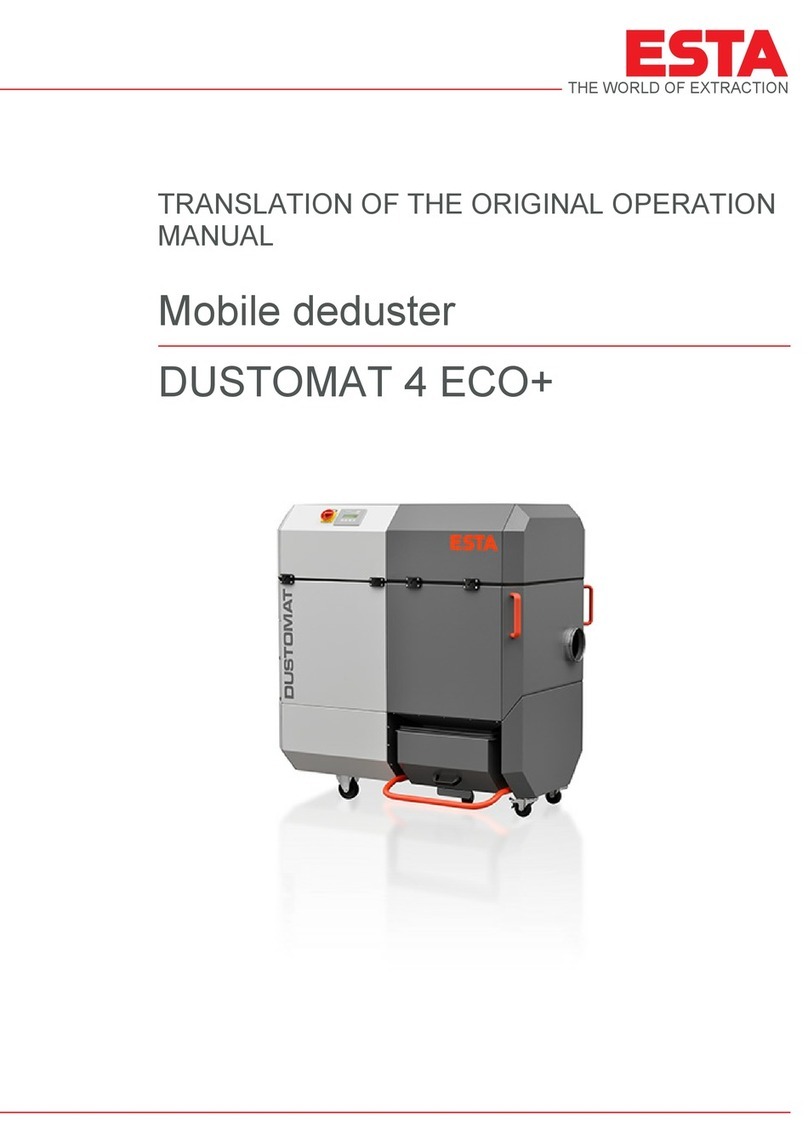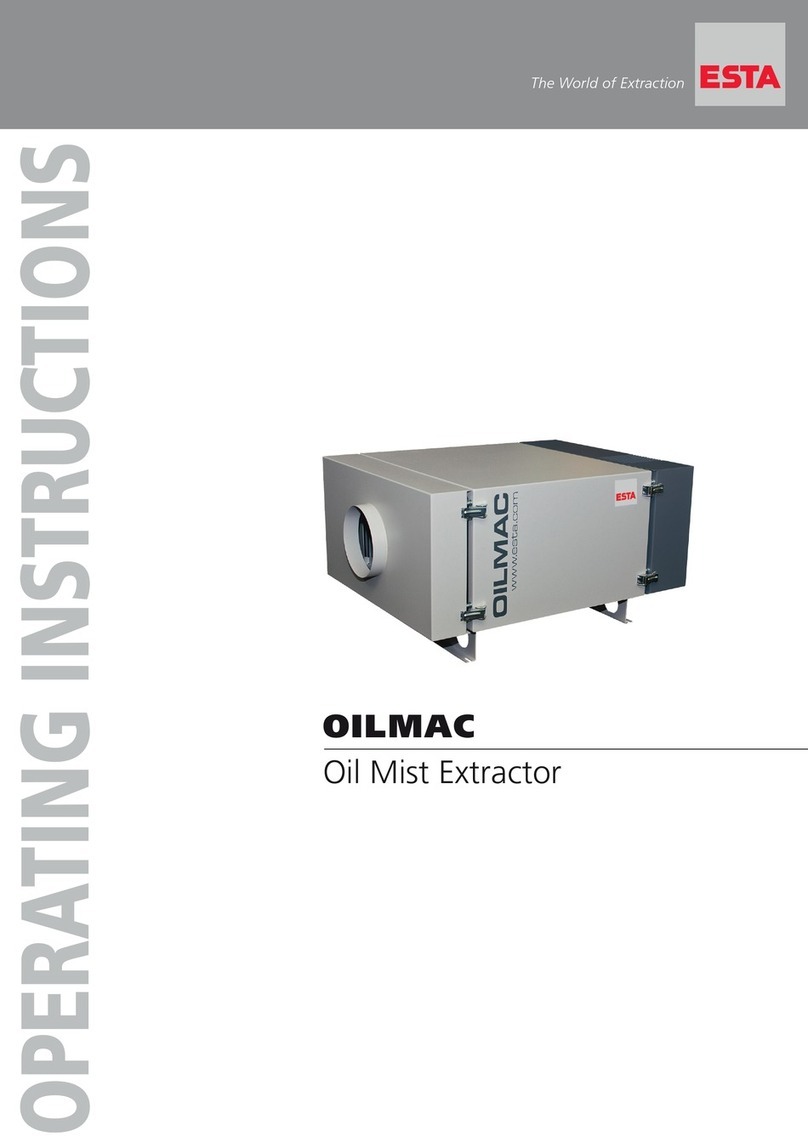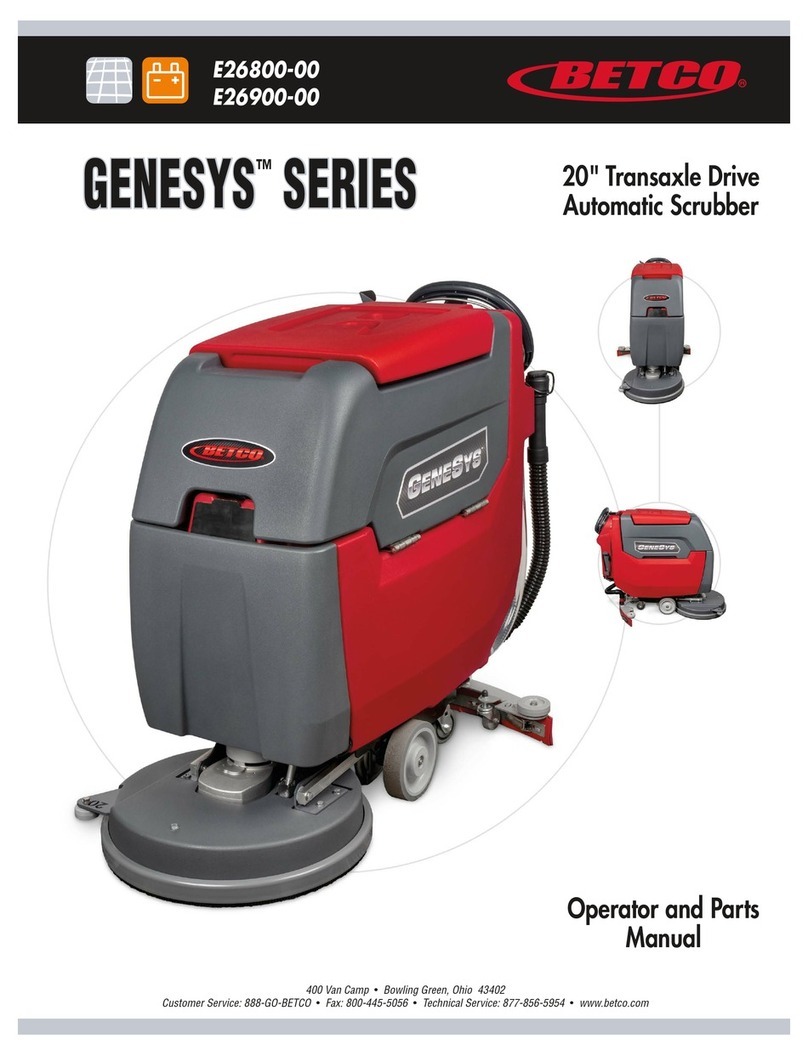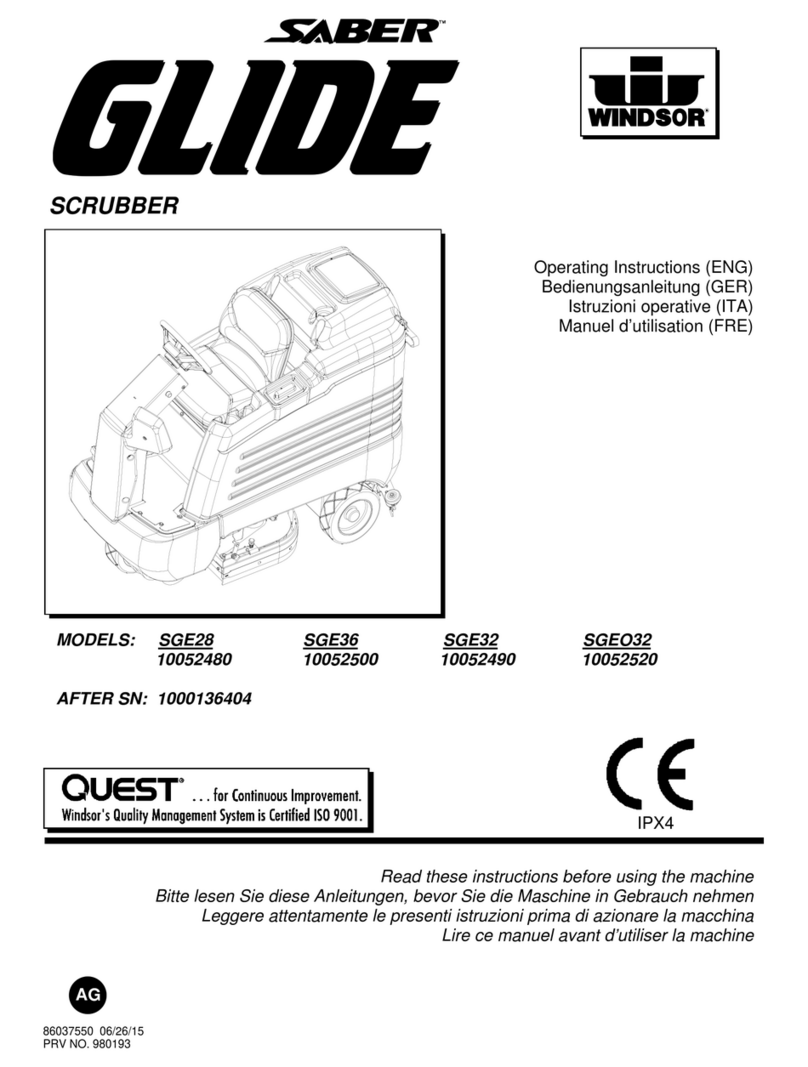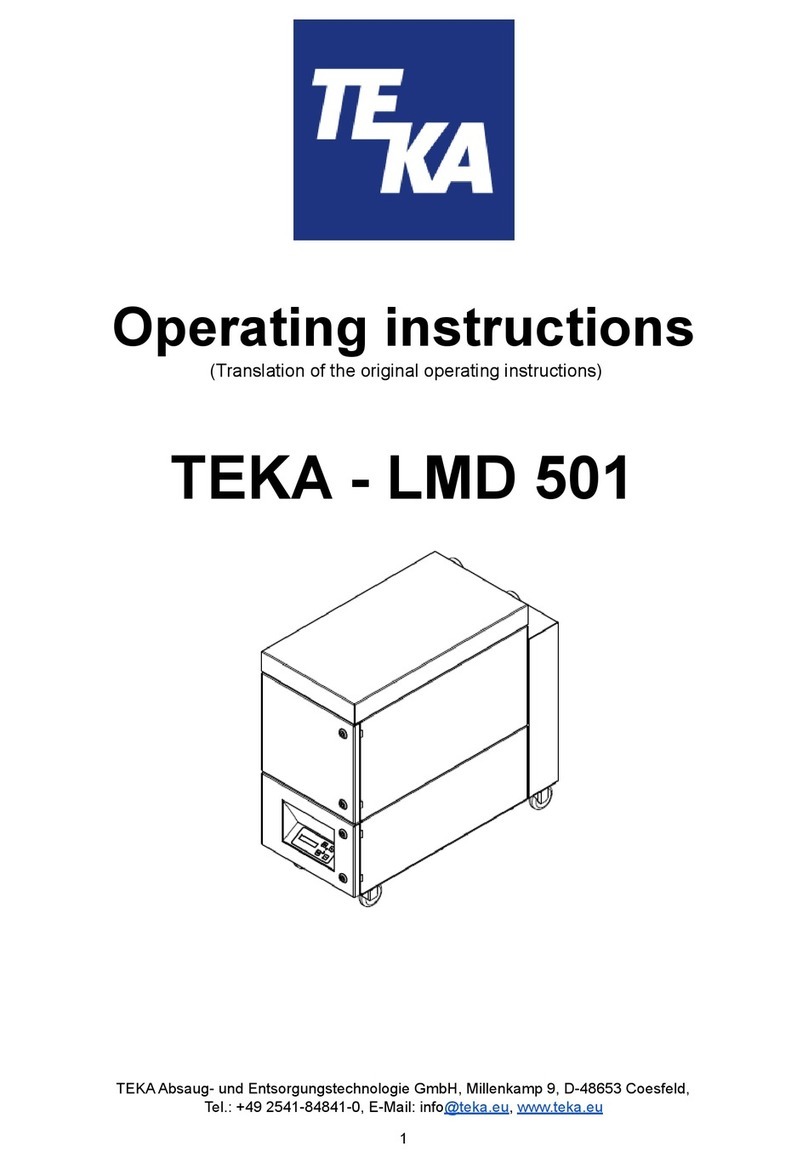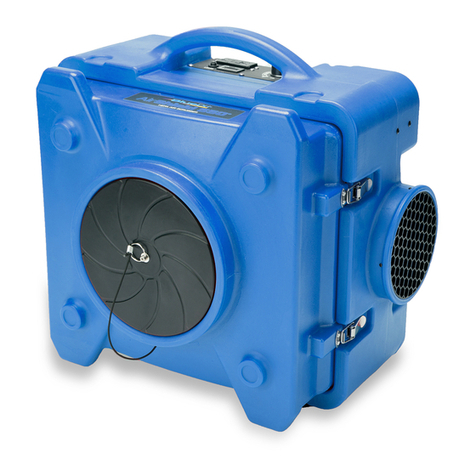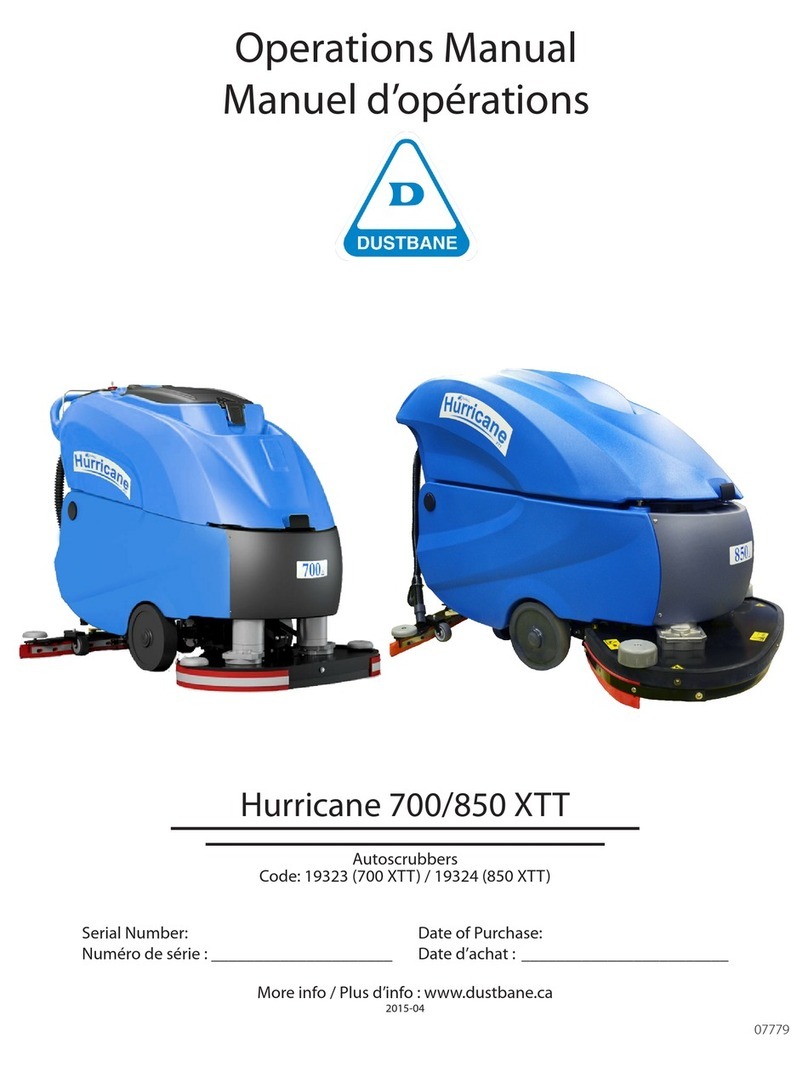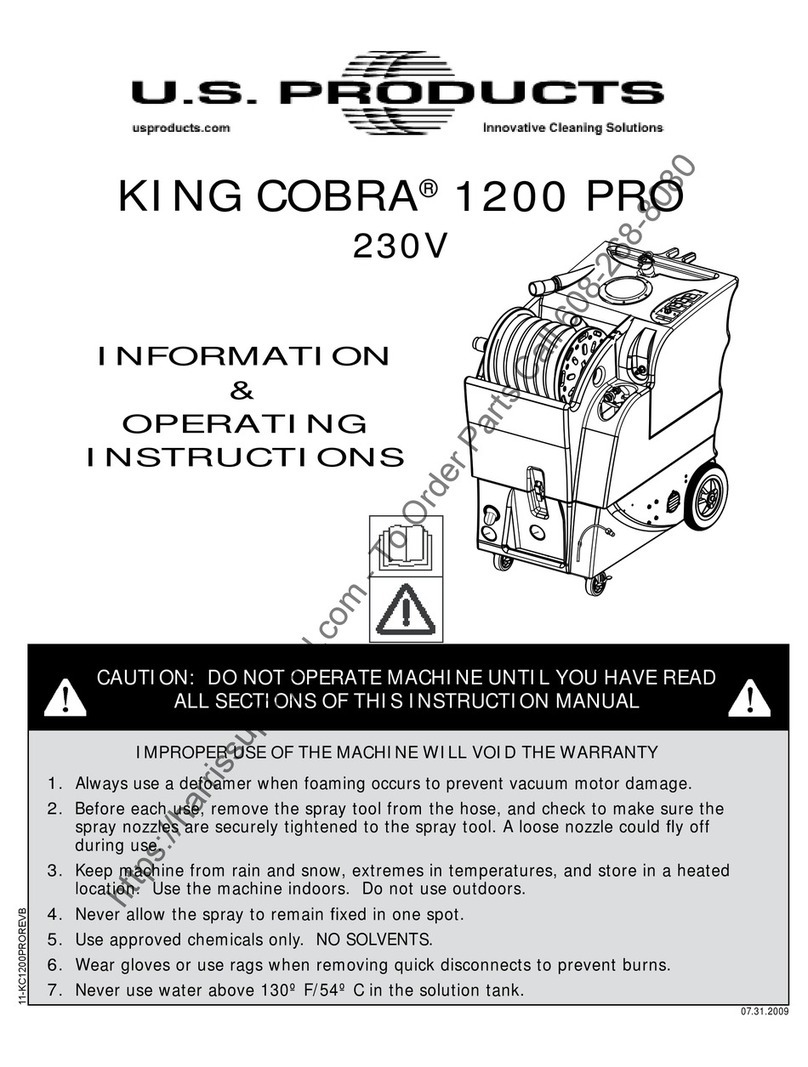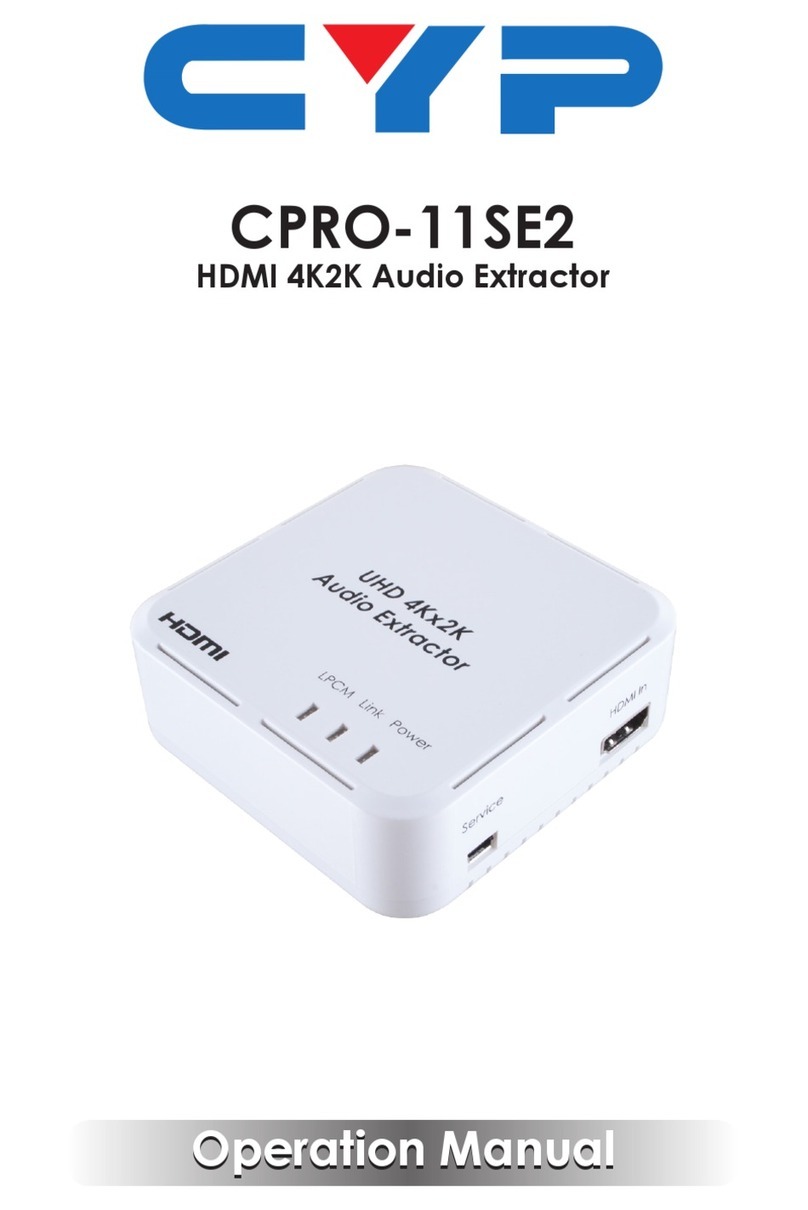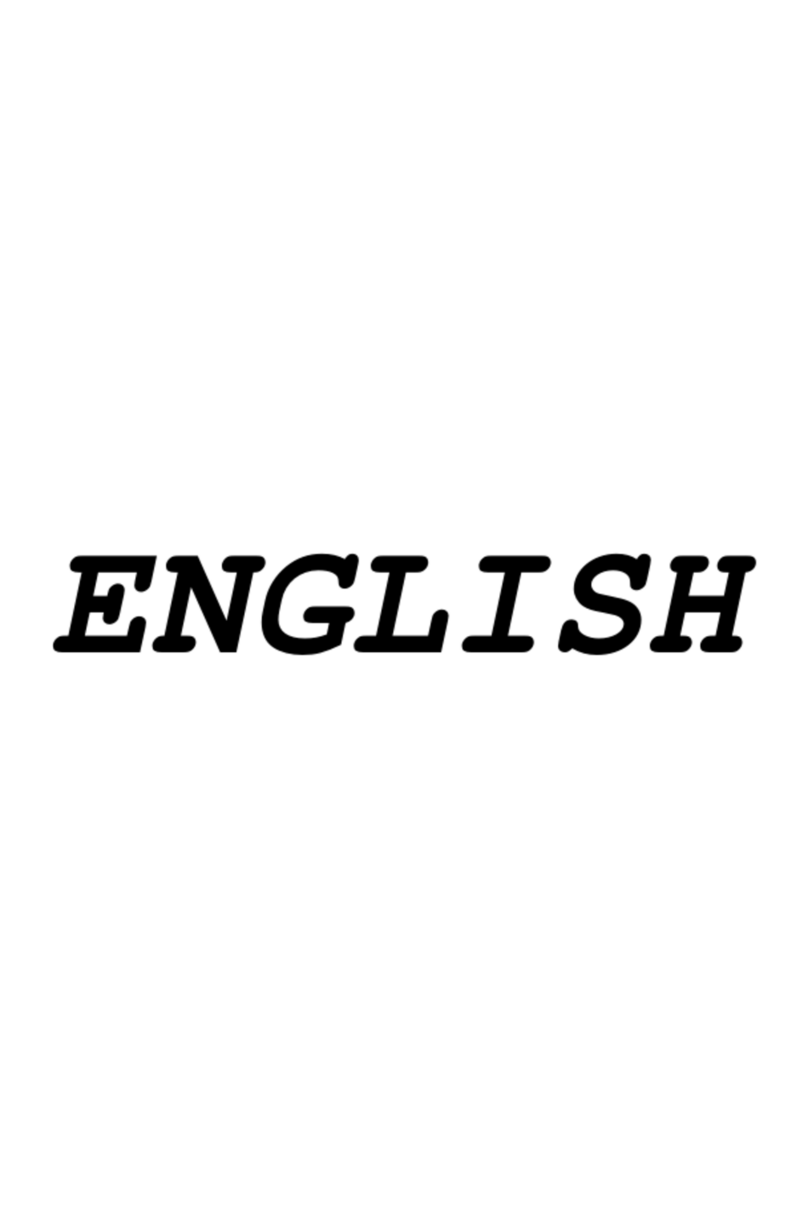Esta DUSTOMAT-16 M User manual

The World of Extraction
OPERATING INSTRUCTIONS
DUSTOMAT-16 M
Mobile Extractor
C
E
R
T
I
F
I
E
D
I
S
O
9
0
0
0
:
2
0
0
8
Quality

Your purchase of an ESTA machine has
been a good decision. The design of
our quality products complies with the
latest state of the art. ESTA products
have been devised to provide for clean
air at the workplaces at which they are
applied. This results in an even more
enhanced level of quality and longer
machine times and, particularly, healthier
working conditions. Should you have
any questions pertaining to suction tech-
nology issues, please feel free to contact
us at any time. Our experts will be gladly
at your disposal.
Your ESTA Absaugtechnik Team
The World of Extraction
www.esta.com
Welcome to the sphere of suction
technology

Operating manual
DUSTOMAT-16M
Item No. 09.420 (DUSTOMAT-16M (230V))
Item No. 09.421 (DUSTOMAT-16M (400V))
Do not use this device unless you have
read the user manual and understand it.
Translation of the original instructions
09420-08-03

2 DUSTOMAT-16M 09420-52-03
Edition notice
Original operating manual
Document No.: 09420-08-03
Publishing date: 03.01.2012
Type of device: DUSTOMAT-16 M mobile extractor
Item No.: 09.420 // 09.421 and variants
Publisher
ESTA Apparatebau GmbH & Co. KG Tel.: +49 (0) 73 07 80 4 -0
Gotenstraße 2-6 Fax: +49 (0) 73 07 80 4 -500
Germany www.esta.com
Copyright notice (per DIN ISO 16016:2007-12)
Transfer or reproduction of this document, or the use or communication of its content, is
forbidden without explicit consent. Violators will be liable for damages. All rights to patent, utility
or design registration are reserved.
Warnings and safety instructions
Electrical current hazard
Note
Reference to ESTA customer service
Reference to legal regulations

09420-52-03 DUSTOMAT-16M 3
Contents
Contents ..................................................................................................................................... 3!
1.!General safety notes ...........................................................................................................4!
2.!Preventing mechanical hazards ......................................................................................... 6!
3.!Preventing electrical hazards .............................................................................................6!
4.!Preventing dust hazards ..................................................................................................... 6!
5.!Intended use ........................................................................................................................8!
6.!Technical data and description ..........................................................................................9!
6.1 DUSTOMAT 16 M ..............................................................................................................9!
6.2 Functional description......................................................................................................... 9!
7.!Delivery, installation and start-up .................................................................................... 10!
7.1 Delivery and transport ......................................................................................................10!
7.2 Installation ........................................................................................................................10!
7.3 Start-up.............................................................................................................................11!
8.!Maintenance and troubleshooting ................................................................................... 12!
8.1 Maintenance instructions..................................................................................................12!
8.2 Inspection and maintenance intervals .............................................................................. 13!
8.3 Troubleshooting................................................................................................................14!
9. Monitoring the minimum airflow volume ..........................................................................16!
10. Cleaning.............................................................................................................................16!
10.1 Manual pneumatic filter cleaning ....................................................................................17!
10.2 Filter replacement...........................................................................................................17!
11.!Disposal..............................................................................................................................18!
11.1 Disposing of collected dust materials ............................................................................. 18!
11.2 Disposing of the dust extractor ....................................................................................... 19!
12.!Optional equipment ...........................................................................................................20!
12.1 Exhaust arm ...................................................................................................................20!
12.2 Pre-separator .................................................................................................................20!
13.!Device diagram ..................................................................................................................21!
14.!Declaration of conformity .................................................................................................22!
Notes ......................................................................................................................................... 23!
Notes ......................................................................................................................................... 24!
Notes .........................................................................................Fehler! Textmarke nicht definiert.!

4 DUSTOMAT-16M 09420-52-03
1. General safety notes
Before operation, all persons who are to use the dust extractor or perform
maintenance on it must be provided with information, instructions and training in
using the device and on the substances for which it is to be used, including the
procedure for safe disposal of the collected material. Responsibilities must be
clearly established for the following:
!Installation
!Start-up
!Operation
!Maintenance and repair
The device must be used only by persons who have been instructed in its
handling and are explicitly authorized to use it.
Always keep the operating manual at the place where the dust extractor is being
used, so that it can be seen by personnel at all times.
No liquids, aggressive gases, easily flammable materials or glowing particles
(such as hot embers) may be aspirated. For example, it is prohibited to use the
DUSTOMAT-16M in painting operations. It is forbidden to exhaust processing
machines with active ignition sparks or hot embers (such as multi-blade saws).
The dust extractor is intended only for dry cleaning and must not be used or stored
outdoors or under wet conditions.
Installation and operation in dust-explosive or gas-explosive areas is
forbidden.
Only original ESTA replacement parts must be used; use of other products will
void the warranty.
During exhaust, the volume flow returned from the dust extractor into the room
must be no more than 50% of incoming air. With free room ventilation, the
incoming airflow must equal the room volume every hour. This means that the rate
of air replacement must be once per hour.
Incoming air flow [m³/h] = room volume [m³]"air replacement rate [1/h]
Example:
When the dust extractor is operating at the nominal airflow volume of 1140m³/h
the same volume of fresh air must therefore be fed in. This occurs with natural
ventilation if the volume of the work room is 1140 m³ (e.g., 380 m² surface with a 3
m ceiling height).

09420-52-03 DUSTOMAT-16M 5
Make sure that the power cable does not become damaged by being run over,
compressed, pulled, etc.
The power cable must be examined regularly for signs of damage or ageing.
The device must not be used if damage to the power cable is determined.
The power cable and plug must be replaced only by an appropriately trained
electrical specialist.
For the power supply and the device’s power cords, only original ESTA
replacement parts must be used. This guarantees that they are spray-proof
according to applicable standards and have the necessary mechanical strength.
When transporting the device, always close the damper flap on the intake port to
prevent dust from escaping.
The power cord must be plugged in only after the dust extractor has been
successfully set up at its place of use. For this a 16-amp Schuko wall socket fuse
(for alternating current drive) or a CEE wall socket with a slow-blow fuse (for
three-phase drive) must be in place.
Only plugs and connectors complying with EN 61241-14 must be used for
connecting electrically driven industrial vacuums and dust extractors.
Coupling plugs and connectors or adapters are not permitted.
After use, before moving the devices to another site and before cleaning,
maintenance, or replacement or removal of movable parts, the device must be
unplugged and the compressed air, if used, is disconnected.
Only original ESTA conductive accessories may be used for operating the
dust extractor.
According to work equipment user directives 2009/104/EG and TRGS 560,
safety devices for prevention or removal of hazards must be regularly
maintained and regularly inspected by an expert for safe, flawless operation.

6 DUSTOMAT-16M 09420-52-03
From its first use, the DUSTOMAT contains toxic dust. Emptying and
maintenance processes, including removal of the dust collection container,
must be performed by expert personnel who are wearing appropriate
protective gear. The dust extractor must not be operated without the
complete filtration system!
In all emergencies, the device must be disconnected from the power supply
immediately, the device turned off at the emergency switch, and the plug
pulled immediately. If there is a fire, the fire department is to be alerted
immediately, and the fire must be contained by appropriate means.
2. Preventing mechanical hazards
All movable machine parts driven by electric motors must be covered by fixed,
securely fastened protective covers that can be removed only with tools.
Residual risk:
If a covering that can only be unfastened with a tool is removed, there is risk
of injury if the machine is running!
3. Preventing electrical hazards
All electrical parts must be covered by fixed, securely fastened protective covers
that can be removed only with tools. The device complies with Protection Class I
according to EN 60 335.
Residual risk:
If a covering that can only be unfastened with a tool is removed, a hazard is
posed by electric current!
4. Preventing dust hazards
Using a one-way dust collection bag with a closable opening guarantees low-dust
removal of the collected material.
Residual risk:
When emptying the dust collection bag, it is possible to inhale dust.
Following the instructions in the section “Disposal” will minimize this
hazard!

09420-52-03 DUSTOMAT-16M 7
4.1 Devices for dust class M
The device is designed for use with dusts that are hazardous to health. When
working on the open device (for maintenance, cleaning, repairs), the operator
must take special protective measures, which include wearing special personal
protective gear. When the device is being operated, the complete filtration
system, consisting of the main filter and backup filter must be used. The following
warning is shown on the device.
Open the device only when it has been turned off from the control panel, and
when it has been determined by a wait time of about 4 minutes that the filter
cleaning process has been performed and that the dust inside the device has
settled in the dust collection container. Before opening, turn the device off at the
main switch and secure it against unintentional reactivation. Using a one-way dust
collection bag with a closable opening guarantees low-dust removal of the
collected material.

8 DUSTOMAT-16M 09420-52-03
5. Intended use
The ESTA dust extractor has been manufactured according to the state of the art
and in compliance with safety regulations. It is suitable for commercial use, such
as in industrial firms and workshops.
DUSTOMAT devices are suitable for exhausting dry, free-flowing dusts. They are
equipped with a filter for dust class “M” (moderate hazard) for separation of dust
with an exposure limit of more than 0.1 mg/m³. The purified air can be directed
back into the work area.
Version B1 dust extractors:
In terms of safety, model B1 dust extractors are not suitable for exhaust on
running processing machines on which sources of ignition have not been
eliminated.
Installation and operation in dust-explosive zones 20 and 21 or gas-explosive
areas is forbidden!
In terms of safety, the DUSTOMAT is suitable for exhausting dry non-flammable
dusts in Zone 22. This does not include dusts known to have extremely low
minimum ignition energy (MIE<1mJ). Use with these dusts requires case-by-case
safety considerations in connection with other measures, if necessary.
In regard to safety, dust-explosion-protected industrial exhaust devices are not
suitable for aspiration of explosive or equivalent materials in the sense of Section
1 of the explosives act, of liquids or of mixtures of flammable dusts with liquids.
Only original, conductive ESTA accessories must be used with industrial exhausts
and dust extractors!
Conductive exhaust equipment (e.g., exhaust hoods on machines) and conductive
parts of processing machines (e.g., devices in protection class II) that are not
earthed (grounded) through the dust extractor must be earthed in some other way
to prevent electrostatic charges.
When connecting an electrically conductive suction hose, make sure that the
electrical connection between the hose and the port is perfect. If a so-called
“spiral hose” is used, the metal spirals must be stripped and pressed to the bare
wall of the exhaust port with a pipe clamp after the hose is attached.
The device must not be used or stored outdoors or under wet conditions.
Other applications are considered unintended use. ESTA is not liable for damages
due to unintended use!
ESTA sets up the dust extractor according to the operator’s information.

09420-52-03 DUSTOMAT-16M 9
6. Technical data and description
6.1 DUSTOMAT 16 M technical changes reserved
Model (see model plate) AC current Three-phase current
Connection voltage [V] 230 400
Drive output [kW] 1.3 1.1
Rated current [A] 7.2 2.6
Nominal frequency [Hz] 50
Circuit breaker [A] 16
Max. vacuum [Pa] 2000
Environmental conditions [°C] 5# $ # 40
Air humidity [%] 60
Max. airflow volume [m³/h] 1140
Dust collection container [litres] 45
Intake port (dia.) [mm] 125
Dimensions (L x W x H) [mm] 1,150 x 670 x 1,470
Filter area [m²] 9.4
Max. sound pressure level* dB(A) 67
Weight [kg] 110
Production year See model plate
* The measurement surface sound pressure level was measured according to DIN EN ISO 3744
in an open area, at maximum volume flow, at a 1 m distance from the surface of the device, at
a height of 1.6 m above ground. From the measurement surface sound pressure level and the
device dimensions, the sound power level according to DIN EN ISO 3744 was calculated.
6.2 Functional description
The DUSTOMAT is equipped with a 1.3 kW AC motor or a 1.1 kW three-phase
motor that drives a radial fan. The device is turned on and off using the red-green
double push button.
The vacuum created by the fan draws air through the device’s intake port. A
permanent filter set up within the filter housing separates the dust that is in the
exhausted air. The purified air is guided back into the room through the exhaust
vents.
Optionally, the device can be equipped with an exhaust arm for pinpoint accuracy
in drawing dust at its source. This frees the workplace of toxic dust.
When using an exhaust arm mounted on the device, fold the exhaust arm together
during transport to prevent the device from tipping.

10 DUSTOMAT-16M 09420-52-03
The DUSTOMAT is equipped with a vacuum monitor as a control device. This
monitoring device measures the vacuum in the filter. With increased dust soiling
the filter, the flow resistance increases along with the vacuum behind the filter. If
the value set on the vacuum monitor is reached, a signal sounds, and the filter
must be cleaned with the machine off. A pneumatic nozzle cleaning device is
provided for this purpose.
This frees the filter surface from dust and renews it. The dust collection container
with a collection bag underneath the filter catches the dust that is cleared.
For easier removal of the collected material, the upper part can be tipped
backwards and the dust collection container removed from the device complete
with its contents.
7. Delivery, installation and start-up
7.1 Delivery and transport
At delivery, the DUSTOMAT is fastened to a pallet. After the protective cover and
the bottom fasteners have been removed, it can be picked up with a forklift. Do not
use a crane!
Upon delivery, please inspect the device for transportation damage. Damage
determined must be reported and documented immediately.
ESTA maintenance service: +49 (0) 7307 804 - 0
When moving the device, make sure the ground can support it and be driven
over.
When using an exhaust arm mounted on the device, fold the exhaust arm together
during transport to prevent the device from tipping.
7.2 Installation
Other than perhaps moving a connection for the power necessary, no installation
work is needed. Pneumatic cleaning requires a compressed air connection in the
device’s set-up area (4-6 bar, oil- and water-free).

09420-52-03 DUSTOMAT-16M 11
ON/OFF
switch
Guideline on
direction of
rotation
The optionally included exhaust arm is attached on the lateral exhaust arm holder
and is locked into the desired position by the star knob. Insert the nipple on the
hose end of the arm into the butterfly valve, which is located on the filter housing.
Then, using the included tapping screws (3.5 x 9.5) and the drilled holes, firmly
connect the nipple to the butterfly valve.
7.3 Start-up
Only persons authorized under “General safety instructions” must turn the
device on.
Before setting up the cable connection between the device and the power
grid, check to make sure the operating voltage shown on the model plate is
the same as that of the grid.
Before the device is used, its operation must be tested.
On devices driven by three-phase current, check the direction of rotation.
Before a device with three-phase drive is started
up (power supplied through a CEE plug) the fan’s
direction of rotation must be
checked. By briefly turning the
device on, you make sure that the
fan rotor’s direction of rotation
agrees with the direction of the
arrow.
If the direction of rotation is wrong,
the polarity of the power supply must be reversed. For this purpose, the CEE plug
is equipped with a phase inverter. Using a screwdriver to turn the pole pin built
into the insulated part of the plug changes the fan rotor’s direction of rotation.
When the direction of rotation is wrong, the device gets impermissibly hot,
the airflow volume gets weaker, and the device’s performance suffers. This
can also damage the device.
If the operational check has been done, place the device on a level surface, as
close as possible to the work area. Lock two of the device’s wheels. Set the
exhaust arm’s extraction hood as close as possible to the dust source.
Insert the electrical plug into an appropriate socket. Before the dust-producing
work begins, the dust extractor must be switched on.
During operation, the dust extractor’s location should not be changed.

12 DUSTOMAT-16M 09420-52-03
8. Maintenance and troubleshooting
8.1 Maintenance instructions
For maintenance by qualified personnel, the device must be opened, cleaned and
inspected at the given locations, as well as possible, without any hazard being
posed to maintenance personnel or other persons. Proper precautions must be
taken before cleaning and removal of wearing parts. This includes locally filtered
forced-air ventilation in the area in which the device is being maintained, and
proper personal protective gear.
During maintenance or repair work, all soiled objects that can no longer be
adequately cleaned must be disposed of. Such objects must be discarded in an
impermeable bag in compliance with applicable regulations for disposal of such
refuse.
If the device is not needed in its location of use for a long time, it must be stored in
a dry room. The temperature should not be below 5°C or over 25°C.
Before the device is placed into storage, it is recommended that it be cleaned with
a damp cloth, that the filter be cleaned, and that the dust container be emptied.
The device must never be cleaned with flowing water.
The operator is obligated to have maintenance performed once per year.
During maintenance, the device is to be tested by a trained expert for
correct operation. A log is to be kept of the main annual inspection in the
included maintenance book. It must document the date of inspection,
deficiencies determined and the name of the inspector. The date of the next
inspection can be read from the test plate installed on the device.

09420-52-03 DUSTOMAT-16M 13
8.2 Inspection and maintenance intervals
Regular maintenance consists of 3 intervals:
1. Daily inspection includes:
By the dust extractor’s user
Visual inspection
!for damage to the device or its parts
!for mechanical damage to the power cable
!for a full dust collection container (regulations require that the container be
emptied if it is more than 2/3 full)
2. Monthly inspection includes:
By expert maintenance personnel
Visual and functional inspection,
!for filter leaks (dust trails or deposits on the air outlets)
!to guarantee operation of the minimum airflow volume monitor (siren).
During inspection, the device’s air intake must be closed. If the siren
sounds, the equipment is in order.
3. The main annual inspection includes:
The last test by ESTA is documented on the device!
In collaboration with the ESTA maintenance service
!Flow volume measurement
!Vacuum measurement
!Current consumption measurement
!Visual check of filters
!Seal inspection
After maintenance, the device receives a new test plate to document that
maintenance has been performed.
This inspection must be done once per year.
The maintenance work must be recorded in writing in the maintenance book
provided. This must make clear the equipment inspected and, if necessary,
the deficiencies found, along with the name of the inspector and the date of
the inspection.
If there is a malfunction, the dust extractor must be switched off
immediately and the responsible maintenance service notified.

14 DUSTOMAT-16M 09420-52-03
According to work equipment user directives 2009/104/EG and TRGS 560,
safety devices for prevention or removal of hazards must be regularly
maintained and regularly inspected by an expert for safe, flawless operation.
Maintenance must be performed according to accident prevention
regulations. The device must be disconnected from the power supply and
compressed air network.
Get the most from ESTA’s maintenance service!
A maintenance contract ensures a long life and top-notch operation for your
dust extractor.
We’ll make you a great offer — just call us up:
ESTA maintenance service: +49 (0) 7307 804 - 0
ESTA replacement part service: +49 (0) 7307 804 - 0
8.3 Troubleshooting
Always use the following checklists if a malfunction is evident. Call the ESTA
maintenance service right away if there is a malfunction that is not discussed in
these lists. Do not perform any repairs on the device yourself if they are not
explicitly specified.
If dust escapes or clouds up from the air outlets, if smoke develops or the
fan runs loud, the device must be disconnected from the power
immediately!
When cleaning, the person doing the work must always wear a respirator
mask (filter mask with particle filter, filter class P3) and gloves.
Before opening the switch box, make sure to pull the electrical plug! Work in
the switch box must be performed only by an electrical expert or an
appropriately trained person.

09420-52-03 DUSTOMAT-16M 15
Problem Possible cause Possible solution
Device shuts off The motor protection
relay has been tripped
due to low voltage,
overload or wrong
direction of rotation
Voltage too low
Clean filter
Change the connection
polarity
Allow to cool for 30 min.
Suction performance
diminishes
or the device produces
no suction
Filter clogged
Butterfly valve closed
Suction hose clogged
Clean filter
Open the butterfly valve
Clean the exhaust hose
in an environmentally
sound manner
Warning signal for low
suction volume persists
despite filter cleaning.
Fine dust is sucked right
back to the filter.
Pressure controller set
too weak
Dust collection container
too full
Filter pores clogged
Clean several times with
device at rest and let the
dust settle (1 min.)
Change the pressure
controller after consulting
ESTA.
Replace dust collection
bag
Replace filter

16 DUSTOMAT-16M 09420-52-03
9. Monitoring the minimum airflow volume
At delivery, the vacuum monitor set to sound a
horn signal when soiling of the filter causes the air
speed to go below the minimum of 20 m/s in the
exhaust arm’s hoses. At that point it is absolutely
necessary to clean the filter before using the
machine again (see the “Cleaning” section). The
vacuum monitor must absolutely be kept at the set
values! Correction must be made only by an
appropriately trained person. The adjustment is
made with a size 6 Allen wrench.
10. Cleaning
The people assigned to cleaning work must be instructed on the aspirated
toxic materials and wear a breathing protection mask with a class P3
particle filter, as well as protective gloves. All distractions by uninvolved
persons must be prevented.
During cleaning work, all soiled objects that can no longer be adequately
cleaned must be disposed of. Such objects must be disposed of in an
impermeable bag in compliance with applicable regulations for disposal of
such refuse.
A safety device is built into the machine for monitoring the minimum airflow
volume to be exhausted. A vacuum monitor does the monitoring and activates a
signal. After the signal goes on, the filter must be cleaned.
If fine dust is being exhausted, the filter needs to be cleaned more often.

09420-52-03 DUSTOMAT-16M 17
Compressed air
connection
10.1 Manual pneumatic filter cleaning
If the filter is to be cleaned, wait about a half minute
after turning off the device, to allow the fan’s rotor
to come to a standstill. Before cleaning begins,
close the butterfly valve on the device’s intake port
to prevent dust from escaping during cleaning. For
cleaning, then connect the compressed air supply
(4-6 bar, oil- and water-free) to the quarter-inch
plug nipple with a DN 7.2 ¼-inch coupling. Then
turn the hand wheel counter-clockwise until it stops.
Afterwards turn the hand wheel clockwise back to
the starting position. During filter cleaning, streams
of compressed air from the clean air side of the filter remove
filter cakes from the dust-laden side.
If the warning signal still sounds after successful cleaning of the device, check the
amount of material in the dust collection equipment after waiting about a minute.
No later than when it is 3/4 full, empty the dust collection container (see the
section on “Disposal”).
If the signal still sounds after the container has been emptied and cleaned, the
filter must be replaced.
10.2 Filter replacement
Filter replacement must be performed in a well-ventilated room or outdoors.
The people assigned to this work must be instructed on the aspirated toxic
materials and wear a breathing protection mask with a class P3 particle
filter, as well as protective gloves. All distractions by uninvolved persons
must be prevented.
After an extended operation period, the filter pores can be clogged by extremely
fine dust. Even the cleaning equipment cannot remove this dust. Now the filter
must be replaced with a new one.
If possible, filter replacement should be done when there is no work going on.
Additionally, the replacement must be done in a suitable area, so that no other
personnel are endangered. Used filters must be discarded in compliance with
local regulations.

18 DUSTOMAT-16M 09420-52-03
Before the filter is replaced, it must first be cleared of loose dust using the
available cleaning system, and the power and compressed air network must
be cut off.
This requires the following operations:
First turn the hand wheel for cleaning downward until it stops. Loosen and remove
the clamping ring used for securing the lid. The upper part will tilt. Pull the dust
collection bag downward over the upper part. Pull the lid, including the hand
wheel, upward. This creates an opening between the filter housing and lid.
Through this opening, loosen both nuts (all nuts for filter replacement: M8, SW 13)
that secure the filter cleaning equipment. Now the lid, including the cleaning
equipment, can be pulled out of the device. After that, loosen the 6 interior nuts.
Now the filter falls downward into the dust collection bag. Close the dust collection
bag containing the used filter with the included strip. Now install the new filter and
cleaning equipment in the opposite sequence.
Cleaning the filter cartridge in a dismantled state by blowing it out or
beating it is not permissible!
11.Disposal
The people assigned to disposal work must be instructed on the aspirated
toxic materials and wear a breathing protection mask with a class P3
particle filter, as well as protective clothing. All distractions by uninvolved
persons must be prevented.
11.1 Disposing of collected dust materials
Replace the dust collection bag with a new one when it has reached the
container’s maximum fill height (about 3/4) and always after using the dust
extractor.
Since the ESTA company does not know what types of dust are being exhausted,
it can be necessary to replace the dust collection bag before it has reached its
maximum fill level (a large bulk density means heavy weight).
Table of contents
Other Esta Scrubber manuals
Popular Scrubber manuals by other brands
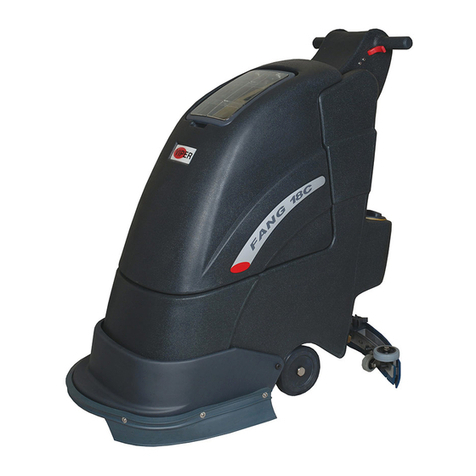
Viper
Viper FANG 18 C user manual
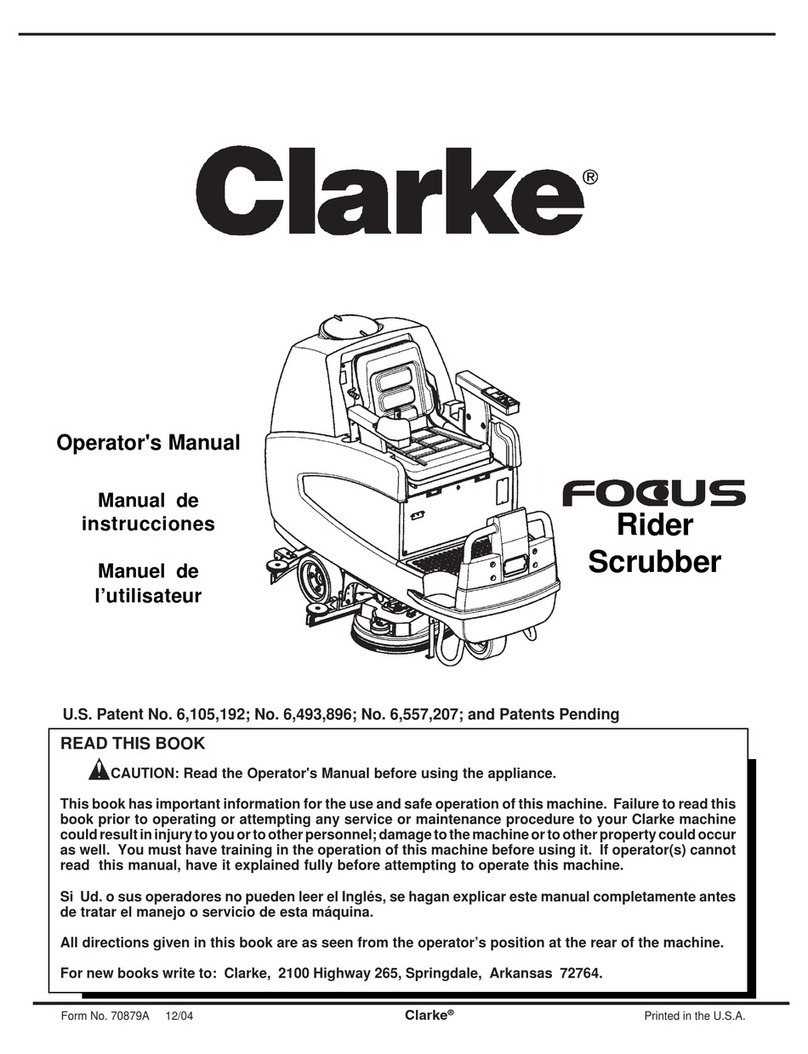
Clarke
Clarke Focus Operator's manual

Donaldson
Donaldson BOFA 3D PrintPRO 3 user manual
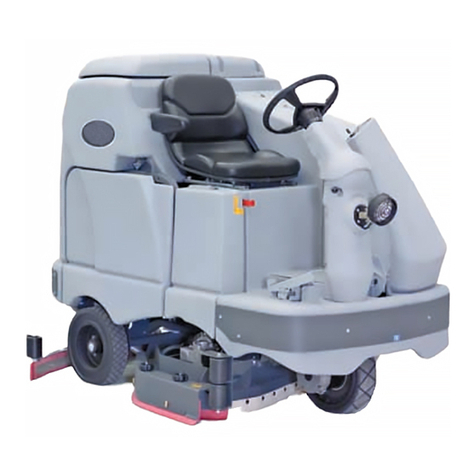
Nilfisk-Advance
Nilfisk-Advance Advance BR 1100S Instructions for use - original instructions

Nilfisk-Advance
Nilfisk-Advance Advance SC1500 Service manual
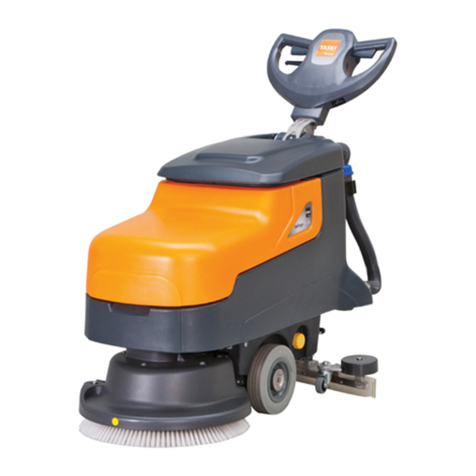
diversey
diversey TASKI SWINGO 450B manual

